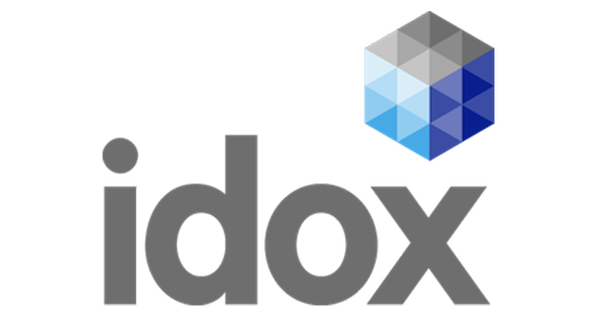How can local authorities capitalise on the data-driven future?
The scale and pace of change within local government have advanced significantly in recent years as the appetite for digital transformation and integration continues to grow. Shaped by increasing volumes of data, the importance of data in decision-making, and the need for greater collaboration and data sharing, there is a collective ambition to maximise the use of technology and think innovatively about the difference councils can make to everyone’s lives.
But while the data-driven future for councils opens up tremendous opportunities, diminishing budgets and perceived challenges in implementing streamlined data strategies mean local authorities often find it daunting to leverage their data effectively. Yet, real-world examples demonstrate that data innovation is already becoming a reality in councils. In this article, Scott Goodwin, Divisional Director for Land, Property & Public Protection, explores how local authorities can embrace existing solutions to capitalise on the power of data while ensuring privacy and security and addressing the key opportunities and challenges ahead.
Data sharing and collaboration
One prominent trend in local government is the prospect of moving towards open data, enabling improved transparency, accountability, and innovation while empowering citizens and businesses to make informed choices. By working together and sharing data, local government organisations can benefit from a more comprehensive and accurate understanding of their communities.
The concept of data sharing to maximise impact is not new. Idox’s work with the Scottish Government’s Spatial Information Service (SIS) has demonstrated the value of standardising and automating data collection across local authorities to build a centralised and accurate national dataset. By collating and merging disparate datasets into one central Spatial Hub, including planning, building standards and gazetteer information, SIS provides an invaluable service to statutory consultees that require access to data that does not stop at local authority boundaries. The availability of open datasets saves organisations time and money as they no longer need to access the data they need from each local authority. The project has demonstrated how multiple sources of information can feed pipelines of information, enabling it to be automated, accessible and searchable so that better insights can be achieved and acted upon.
Additionally, data analytics and artificial intelligence offer local authorities the ability to enhance services, tackle issues, and optimise resource allocation. For example, with an intuitive analytical dashboard, the SIS project enables local authorities to see how many applications have missing information, such as UPRNs, and use that added insight to update their data accordingly.
The UK government has several initiatives to promote data sharing, including the Data Sharing and Governance Framework and the Open Data Strategy, which have helped to increase the amount of government data that is open by default and remove some of the barriers to data sharing between government departments and agencies. But while the increased use of digital services by councils has gathered momentum, with varying levels of data maturity across the country, can local authorities confidently meet their data-driven objectives strategies alone?
The role of geographic information systems (GIS)
For many local authorities, the legacy systems they have in place limit their ability to integrate siloed data and realise the benefit of gaining valuable insights. From council tax collection to social care and planning, there is so much potential for a holistic view of data that can inform predictive targeting of services. GIS technology can be especially valuable in areas such as urban planning, where GIS can help identify areas that may be more susceptible to flooding or other natural disasters.
Land-use pressures continue to increase alongside the UK’s ambitions to drive economic growth and meet the needs of a growing population, whilst adapting to net-zero objectives. Consequently, complex questions will require a holistic view of land that supports policy decisions related to housing, food, water, transport, energy, biodiversity and many other land uses. But while a vast number of high-quality datasets exist related to land use, many remain siloed, untapped resources.
With the help of GIS, local government officials can gain valuable insights that can inform management decisions, improve services for citizens and drive economic growth. This is backed up by a recent government policy paper – Finding common ground – which recommends several steps for how the UK’s data capabilities can be enhanced to support land use decision-making, particularly using innovative visualisation tools to enable better land use decisions with multifunctional benefits.
Combined with the large volumes of data that councils already process, there is so much potential for local authorities to use this as a catalyst for growth and innovation. Yet, for many councils, there remain several hurdles that prevent the streamlined integration and interrogation of data to inform the evolution of public services.
Overcoming hurdles
While open data can improve transparency, accountability, collaboration and innovation among councils, there are also concerns about data quality, privacy, and accessibility. Trust and confidence are vital in maximising the opportunities of digital technologies, particularly concerning the delivery of government services. So what are the key challenges local authorities face in delivering data-driven strategies?
- Safe and secure data: maintaining control of sensitive data and ensuring it is integrated securely is essential, but the intricacies of logistics, management, costs and sourcing in-house skills present an overwhelming task for councils – potentially putting their data at risk from security threats or compromising existing systems. With a managed service, a local authority can offload the burden of connecting to data in a secure, compliant, and safe way – giving time and focus back to councils to focus on optimising front-line services.
- In-house data literacy: Guaranteeing regulation, compliance and security standards while ensuring applications are managed, optimised and backed up takes significant resources and skill that many authorities struggle to recruit. And with budgets stretched more than ever, local authorities are increasingly turning to managed services to deliver cost-effective and transformative outcomes.
- Stakeholder management: Whether a single council project or amalgamating several local authority datasets to create a centralised resource, there are multiple stakeholders involved, often with differing priorities and objectives. Buy-in at all levels is essential for streamlined deployment and to get the most out of an integrated system.
- Technical challenges: There can be complex technical challenges in sharing data between different systems and organisations that can make it difficult to implement data-sharing initiatives. Recruiting in-house skills is challenging, and there is always a risk that talent could move on to other roles.
- Perceived logistical barriers: From purchasing software licensing for analytics tools for all council staff to hiring skilled staff to build analytics tools for them, costs can ramp up significantly. But this needn’t be the case. Partnering with trusted experts who can provide the tools, foundations and expertise to deliver data-driven strategies as a managed service dramatically reduces the costs and headaches of trying to do it all themselves.
The journey to the data-driven future
Local authorities need to ensure that they have robust systems in place to protect sensitive data, as well as adhere to ethical principles when collecting and using data. And with ever-diminishing budgets, the perceived cost of investment into technical solutions and in-house skills required to manage them can be daunting. With research suggesting that 70% of public sector organisations’ infrastructure and 73% of data remain on-premise, the hurdles of deploying a streamlined data strategy make this aspiration appear unrealistic. Actually, there are many examples of successful projects where data standardisation, aggregation, interrogation and visualisation have had a significant impact on UK councils:
GIS data strategies in action:
The National Street Gazetteer is created and managed by every highway authority and aggregated every month by GeoPlace. Idox built ‘Find My Street’ for GeoPlace as a simplified public view of this dataset, allowing every member of the public to check the maintenance responsibility for every street. This is important information in many scenarios and was previously difficult to obtain. The website attracts 1,500 users every day and continues to grow. This open data resource supports the public sector mandate to deliver benefits to society, enabling citizens to benefit from integrated and valuable community-level data.
Idox and HMLR:
Idox’s work with HM Land Registry to support the rollout of the national Local Land Charges (LLC) Register delivered property buyers a quicker, simpler and more cost-effective service, transforming the previous system that was rife with data replication and hindered the sharing of best practice across local authorities. Through Idox’s data extraction and API integration, Idox connects local authorities to the register, enabling the transfer of data to the LLC Register, while complying with stringent controls.
It is these types of national datasets that are published frequently that can be interrogated for complex analysis by stakeholders throughout the property industry to help analyse the mechanics in the market and enable official national measures for elements such as house price inflation. With a truly national smart land registry system in place, more efficient processes can be achieved by moving away from lengthy manual processes to rapid and significantly cheaper services.
Leading by example
To witness the power of digital government and its potential impact, the success of online public services in Estonia is a great example. Estonia has been at the forefront of digital government for several years, leading the way as the best-performing country in Europe with a 78% share of eGovernment users and doubling its share of open data. Estonia is setting a perfect example of how local authorities can support citizens with creative digital solutions that create an atmosphere of openness and trust.

A vision that’s already a reality
The evolving landscape of local government processes is witnessing a shift from a traditional document-centric approach to one that embraces data and digital technologies. Harnessing the power of existing data will play a crucial role in making informed decisions in the future, and local authorities have a strong appetite to use analytics and dashboards to gain valuable insight relating to their data. Those that have started this journey have faced technical hurdles, with reports created in silos, lacking a central hub for sharing templates and knowledge, and multiple versions of the same reports created to answer the same questions by technical staff who have since left their role. This confusing, disparate and expensive setup need not be the norm.
Councils require a way to view insights in the form of analytics without the requirement for expensive licenses or in-house technical expertise. A solution with a simple, familiar interface to not only gain insight but easily interrogate the data they have, and which enables collaboration across councils to fuel innovation and growth. Through these off-the-shelf analytics tools, councils can offload the burden of creating and managing analytics capabilities in-house and instead benefit from powerful, intuitive solutions that can empower them to drive innovation, efficiencies, and enhanced public services for all.


